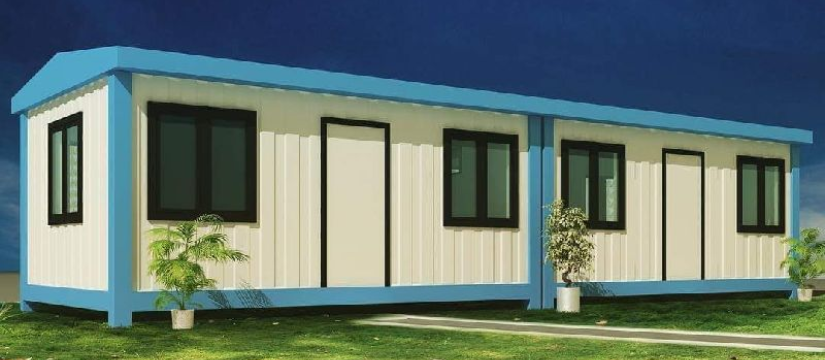Portable cabin manufacturing has witnessed significant advancements and innovations over the years. These versatile structures have found applications across various industries, including construction, hospitality, education, and disaster relief. As we look ahead to the future, the portable cabin industry is poised for further growth and transformation. In this blog, we will explore the predictions and insights that shape the future of portable cabin manufacturing.
1- Sustainable Materials and Green Initiatives
One of the key trends driving the future of portable cabin manufacturing is the focus on sustainability and green initiatives. With increasing environmental concerns, manufacturers are expected to adopt eco-friendly materials and practices. Recycled and renewable resources, along with energy-efficient designs, will become more prevalent, reducing the industry’s ecological footprint.
2- Smart Technology Integration
The future of portable cabins lies in the integration of smart technologies. IoT (Internet of Things) and automation will enhance the functionality of these structures, enabling remote monitoring, energy management, and real-time data analysis. Smart cabins will offer improved energy efficiency, security, and convenience, catering to the demands of modern consumers.
3- Customization and Modular Flexibility
Customization will play a significant role in the future of portable cabin manufacturing. Manufacturers will focus on offering modular designs that can be easily tailored to specific requirements. Customizable layouts, interior designs, and features will enable clients to create personalized spaces that cater to their unique needs, whether for office setups, accommodation, or other purposes.
4- Advanced Materials and Construction Techniques
Technological advancements will lead to the use of more durable and lightweight materials in portable cabin manufacturing. These materials will not only improve structural integrity but also simplify transportation and assembly processes. Additionally, innovative construction techniques, such as 3D printing, might revolutionize how portable cabins are fabricated, making production more efficient and cost-effective.
5- Enhanced Energy Efficiency
Energy efficiency will be a top priority for future portable cabins. Manufacturers will incorporate renewable energy sources like solar panels and energy storage systems to power cabins sustainably. Additionally, improved insulation and HVAC systems will ensure optimal energy usage, reducing operational costs and environmental impact.
6-Integration of Multi-Functional Spaces
The future of portable cabin manufacturing will focus on creating multi-functional spaces that adapt to diverse needs. Cabins designed for both work and living purposes will become more popular, offering flexible environments that cater to changing requirements. For instance, a portable cabin could serve as a workspace during the day and transform into comfortable living quarters at night.
7- Increased Mobility and Portability
As the demand for mobile solutions grows, portable cabins will become more mobile and adaptable. Manufacturers will develop innovative ways to enhance portability, making cabins easy to transport and set up in various locations. This increased mobility will cater to industries such as events, construction, and disaster relief, where rapid deployment is crucial.
Conclusion
The future of portable cabin manufacturing promises a transformation driven by sustainability, technology, and customer-centricity. As the world embraces eco-friendly practices, smart technologies, and customizable solutions, portable cabins will become an essential component of various industries. With the integration of advanced materials, energy-efficient designs, and multi-functional spaces, these structures will provide efficient, cost-effective, and flexible solutions for a wide range of applications.
Manufacturers and businesses in the portable cabin industry must stay ahead of these trends to capitalize on the opportunities that lie ahead. Embracing innovation and sustainability will ensure that portable cabins remain a vital part of our evolving built environment.


